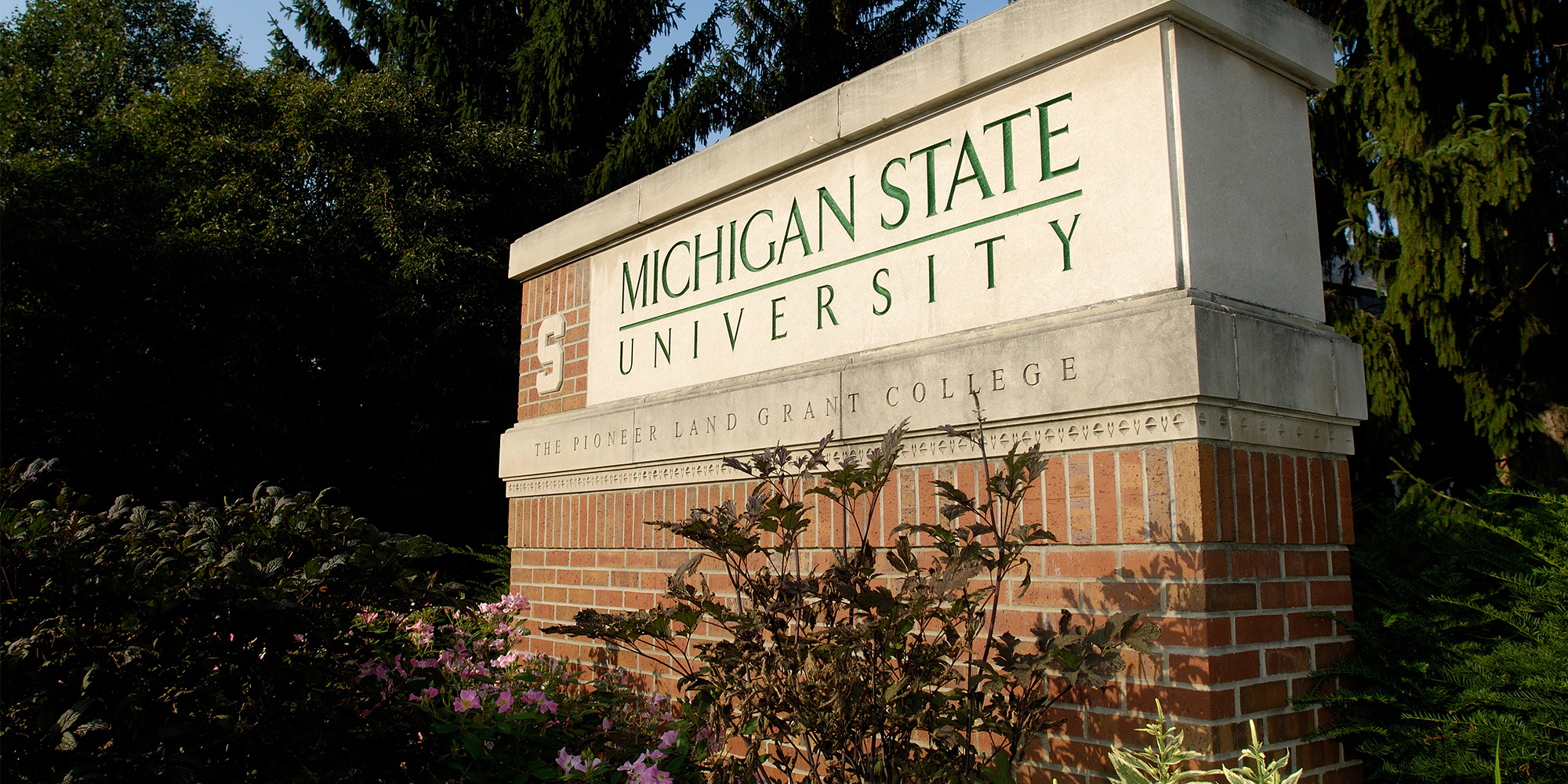
Michigan State Univeristy: "The Pioneer Land-Grant University" and the History of the Land
Annaleise Tripp and Daniela Hernandez
Introduction
The Michigan State University campus is the first land grant university. This is something that the MSU community takes pride in, and the moniker is associated with various programs, such as the Land Grant Goods project. In this website we aim to both explore the heritage of the MSU’s being the first land grant university and shine light on the Indigenous Ojibway community that was sacrificed to fulfill this goal.
Michigan State University and Land-Grant Universities
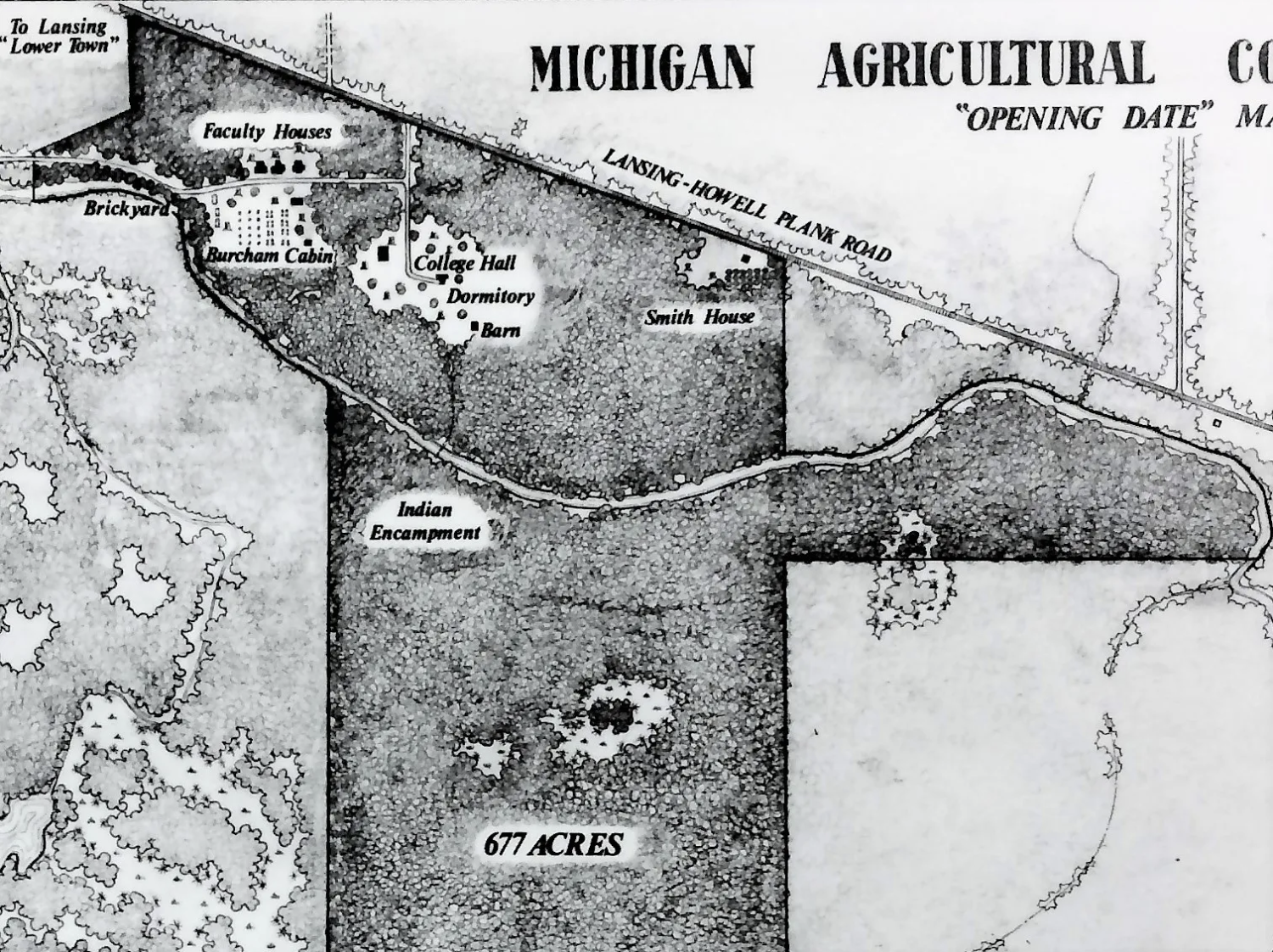
When walking on to Michigan State University’s campus, from either the East or West entrances, you can see the big university signs with the institution's name carved in the stone underneath it is the words “The Pioneer Land-Grant University”. This is the university’s way of showing that it is the school that the Morrill Act based its funded schools off in 1862.
Michigan State University, once known as The Agricultural College of Michigan, was founded in 1855. The Agricultural College of Michigan was founded to provide higher education to all citizens, regardless of social class (Land-Grant, 2018). Today, Michigan State University is in the top 100 universities in the world and has helped produce many high achieving scientists, leaders, and scholars (History). MSU was one of the colleges that the Morrill Act was based on and funded. The Morrill Act was signed in 1862 and funded colleges like MSU. The land set aside for these schools helped to fund one school in each state that would focus on combining “liberal and practical” education with the industrial classes to provide education on agriculture, mechanical arts, and military tactics (History). The Morrill Act is what started the land-grant universities.
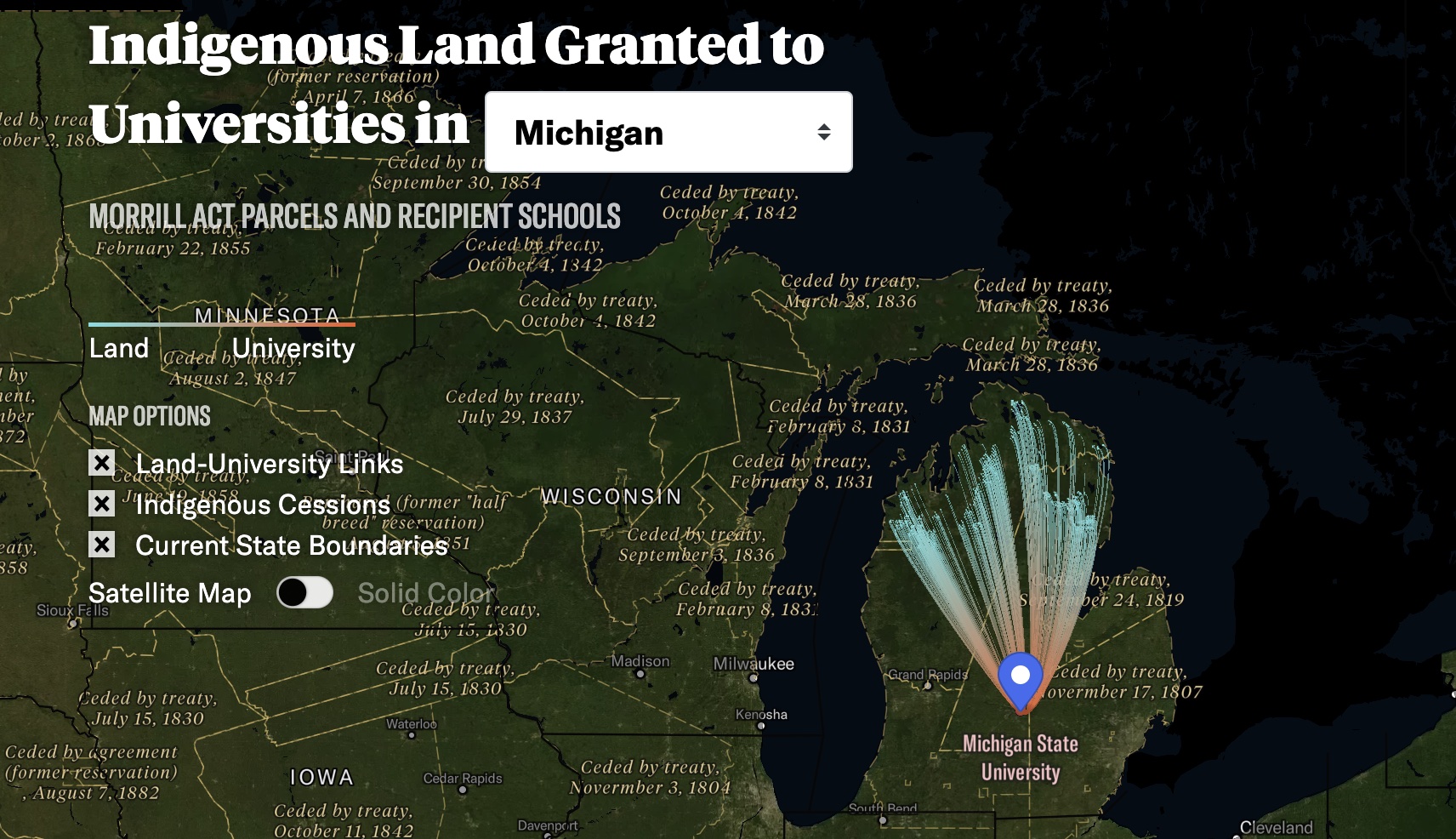
The Morrill Act set aside federal land in the West for each state to use and profit off to fund higher education institutions for all social classes. Most states, like Michigan, sold the land that they were given through the Morrill Act and used the money to start a college that followed the outlined requirements of the 1862 Act (Bao, 2014). The universities funded by the Morrill Act were required to provide education in agriculture and mechanical arts to promote liberal and practical education for the industrial classes in the United States (Bao, 2014). Today, there are more than 100 land-grant universities that can be traced back to the Morrill Act and its funding.
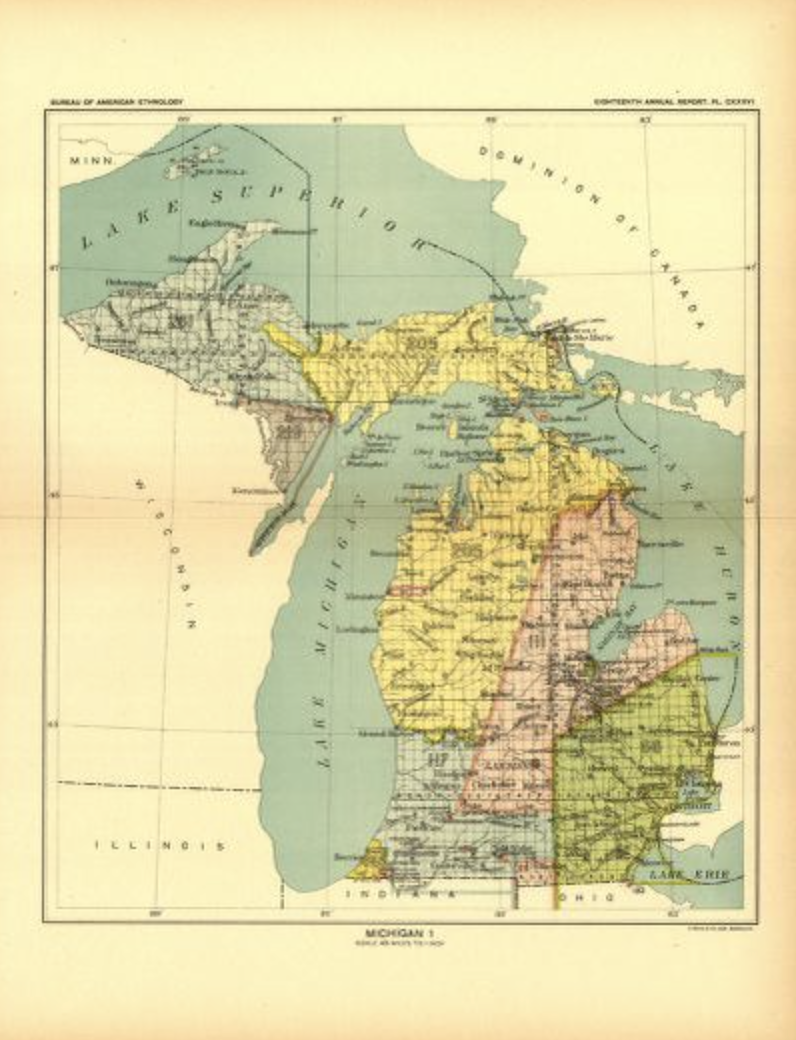
While researching Michigan State University as a Land-Grant University, it was hard to find information about the history of being a Land-Grant University. It was interesting to see the lack of information on the land that was taken to fund the school at the beginning of the institution’s history. The MSU Campus Archaeology Program (CAP) has a couple of articles about MSU as a Land-Grant University and on the Indigenous peoples that once lived on the land that MSU currently sits on. MSU has resources, like DEI, to educate students on diversity and inclusion. The information that is published by the university on being a Land-Grant University is buried in various websites run by the university.
The History Behind the Land
It is important to discuss the history of the Saginaw-Chippewa tribe that lived and used the land MSU is now on. The Saginaw-Chippewa tribe is connected to both the larger Ojibway and Ottawa groups, which at large are a part of the Anishinabek peoples. The Anishinabek are the Indigenous peoples of Michigan and the surrounding great lakes region, including Canada. The Anishinabek came from the people called the Wabanaki that live in the Northeastern U.S., currently Maine. It is important to note that all these groups and tribes are contemporary living communities and not passed history, the Wabanaki, Saginaw-Chippewa and larger groups are thriving communities and nations in 2022.
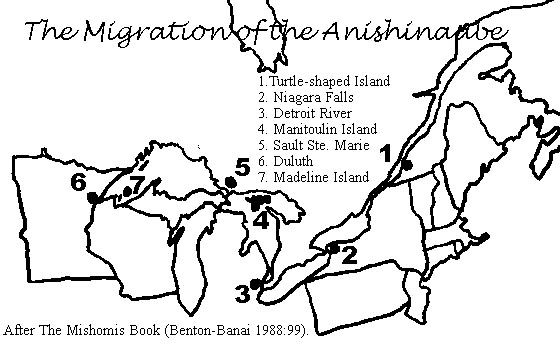
The Anishinabek peoples have an important and complex origin story, which is detailed in the Ziibiwing Center Website. The Ziibiwing Center is a resource to educate and provide culturally relevant information about the Saginaw-Chippewa tribe and other Great Lakes Anishinabek tribes. The center details how the Wabanaki peoples, “the people from the daybreak land” are the first stewards of the Anishinabek people and they received a great prophecy. The prophets told the people to pursue the journey of The Great Walk, this journey entailed leaving their home in the Northeastern part of America and traveling inland. The prophets told the Anishinabek that along the journey they would find the Megis shells, and the presence of the sacred shells would alert them to a resting point in their journey to create a settlement. The people were told that they would know their final stopping place by finding the food which grew on water, wild rice or Manoomin. The journey of The Great Walk was taken by many and led to the creation of the Three Fires Confederacy.
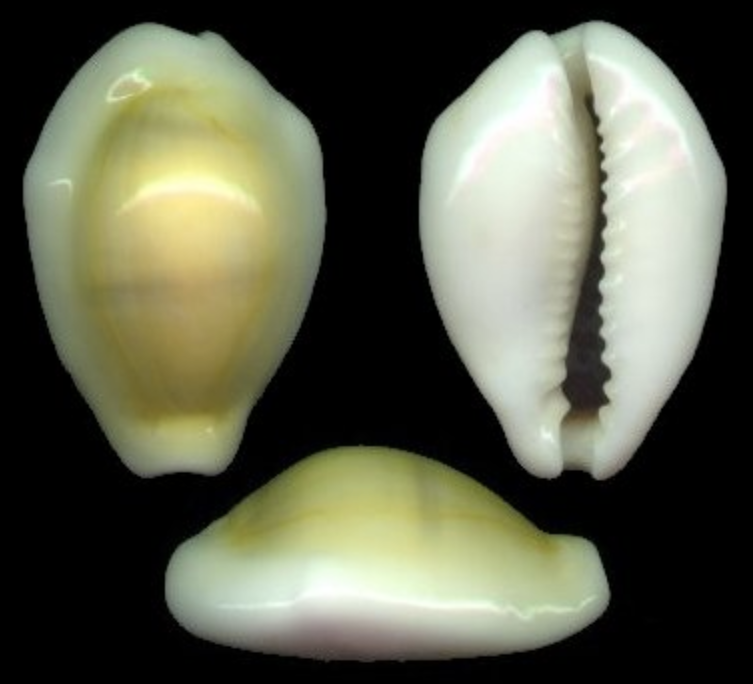
The Three Fires Confederacy was an alliance and deep bonding of the three tribes of Anishinabek, the Ojibway, Odawa, and the Potawatomi. The Ojibway are considered the “Older Brother”, the Odawa the “Middle Brother” and the Potawatomi the “Younger Brother”. The three tribes had specific roles and functions in the Three Fires relationship, which were instrumental to the sustainability and health of the tribes of the Great Lakes Anishinabek (Rubenstein and Ziewacz).
The Saginaw-Chippewa tribe resided on the land that MSU is now on. This tribe has a lineage of two tribes in the Three Fires Confederacy, the Ojibway, and the Ottawa tribes. This genealogy was claimed by the Red Cedar River chief, Chief Okemas, who told of leading an Ojibway contingent of an Ottawa band (Montfort, 56). The Saginaw-Chippewa tribe used and respected the land long before the MSU land grant. On what is now the MSU campus, the Saginaw-Chippewa tribe would come encamp seasonally on the swampy land. The land was not a permanent home but was importantly used for the gathering of wild rice called Manoomin in the late summer. Manoomin is sacred, being the staple grain of the Anishinabek Indigenous peoples and its important spiritual connections (“Mazina'igan Supplement”). The land was also used for hunting, sap collecting and trading. It is important to note that from the 1800 to 2005 there has been a 60-80% wetland loss in Ingraham County, leading to the wild rice in the area being destroyed (Fizzell). This is directly connected to the practice of settlers filling in swamps for the creation of cities, such as MSU's East Lansing.
The MSU campus archaeology program has been able to find out some information about the culture and practices of this tribe and previous tribes on what is now MSU land. The program has found a living space near the Beaumont tower area, which archaeologists consider having been a sacred space (Kooiman). This evidence comes from stone and tool debris left at the site and the high and seasonal use of the Beaumont tower area. Due to the 1819 Treaty of Saginaw the land MSU was founded on was already officially ceded to the U.S. government before the creation of MSU campus. However, there are still records of Saginaw-Chippewa presence on the land after the treaty on the MSU campus. A map created in 1857, the first day of class at MSU, shows an “Indian Encampment,” which is marked by the Red Cedar River (Painter). This may be some of the last non-oral evidence of presence on Indigenous present on MSU land before subsequently being pushed out.
It is difficult to find information about the practices and presence of the Saginaw-Chippewa people on the MSU campus. During this project the MSU campus archaeology program has been a resource, however the archaeology program does not seem to be focused as much on Indigenous history, as the MSU campus history itself. This factor did make finding information specific to the history of the Saginaw-Chippewa tribe difficult.
Conclusion
The institution of Michigan State University has a strong history, including being the first land grant university. This is a point of excellence for the dominant culture and for the spread of education around the country. However, the story is not this simple, and the history of the Morrill act and the displacement of the Saginaw-Chippewa tribe is a hard truth to digest. It is important to acknowledge the Anishinabek and Saginaw- Chippewa communities for what their history is and equally as the contemporary communities they are now.
Resources
Written:
Bao, Robert. “Cover Story: What It Means to Be a Land-Grant University.” Alumni, Michigan State University, 22 Dec. 2014, alumni.msu.edu/stay-informed/alumni-stories/cover-story-what-it-means-to-be-a-land-grant-university.
Benton-Banai, Edward. The Mishomis Book: The Voice of the Ojibway. University of Minnesota Press, 2010.
Fizzell, Chad. “Status and Trends of Michigan's Wetlands: Pre-European Settlement to 2005.” State of Michigan, 23 July 2014, https://www.michigan.gov/documents/deq/wrd-wetlands-status-trends_556006_7.pdf.
Hardy, Eddie. “Gastropods by Eddie Hardy.” Conchology, https://conchology.be/?t=261.
“History & Land-Grant Identity.” MSU Brand Studio, Michigan State University, brand.msu.edu/storytelling/msu-history.
Kooiman, Susan. “BEFORE MSU: EXPLORING THE PRE-CONTACT HISTORY OF MICHIGAN STATE.” MSU CAMPUS ARCHAEOLOGY PROGRAM.
“Land-Grant Roots: Msutoday: Michigan State University.” MSUToday, Michigan State University, 2 July 2018, msutoday.msu.edu/news/2018/land-grant-roots.
Manoomin: Native Wild Rice in Michigan, https://www.gtbay.org/wp-content/uploads/2021/10/Manoomin-Native-Wild-Rice-in-Michigan.pdf.
“Mazina'igan Supplement.” GLIFWC, http://glifwc.org/publications/pdf/Ricing_Supplement.pdf.
Montfort, Margaret Mary. Ethnic and tribal identity among the Saginaw Chippewa of nineteenth century Michigan. 1990.
Painter, Jeff. “In the Beginning: Campus before MSU – MSU Campus Archaeology Program.” MSU Campus Archaeology Program, 21 September 2017, http://campusarch.msu.edu/?p=5494.
Rubenstein, Bruce A., and Lawrence E. Ziewacz. Michigan: A History of the Great Lakes State. Wiley, 2014.
Tanton, TL. “Midewiwin.” The Canadian Encyclopedia, https://www.thecanadianencyclopedia.ca/en/article/midewiwin.
“Ziibiwing- Home Page.” Saginaw Chippewa Indian Tribe, http://www.sagchip.org/ziibiwing/.
Images:
Image 1. Campus Sign. Retrieved from Arts, Cultural Management, & Museum Studies
Image 2. 1857 Map of First Day of Classes. Retrieved from MSU Campus Archaeology Program Blog
Image 3. Land-Grant Univeristies and Treaties Map, MI. Retrieved from https://www.landgrabu.org/
Image 4. Map of the Great Walk. Retrieved from The Mishomis Book: The Voice of the Ojibway
Image 4. Royce Map of Michigan, 1899. Retrieved from Library of Congress
Image 5. Megis Shells. Retrieved from https://conchology.be/?t=261